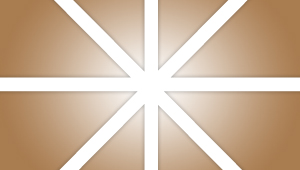- download
Acucise Endopyelotomy Surgery
Definitions:
Ureter: the duct that transports urine from the kidney to the bladder: Stent: a plastic hollow tube that is placed into the ureter, from the kidney to the bladder to prevent the ureter from swelling shut.
General Instructions:
Despite the fact that no skin incisions were used, the area around the ureter and bladder is raw and irritated. The stent is a foreign body which will further irritate the bladder wall. This irritation is manifested by increased frequency of urination, both day and night, and also an increase in the urge to urinate. In some, the urge to urinate is present almost always. Sometimes the urge is strong enough that you may not be able to stop yourself from urinating. The only real cure is to remove the stent and then give time for the bladder wall to heal which can't be done until the danger of the ureter swelling shut and allowing time for the incision to heal has passed. (Varies from 21-30 days).
You may see some blood in your urine while the stent is in place and a few days afterwards. Do not be alarmed, even if the urine was clear for a while. Get off your feet and drink lots of fluids until clearing occurs. If you start to pass clots or don't improve, call us.
Diet:
You may return to your normal diet immediately. Because of the raw surface, alcohol, spicy foods, acidy foods and drinks with caffeine may cause irritation or frequency and should be used in moderation. To keep your urine flowing freely and to avoid constipation, drink plenty of fluids during the day (8 - 10 glasses). Tip: Avoid Cranberry Juice -- very acidy!!
Activity:
Your physical activity doesn't need to be restricted. However, if you are very active, you may see some blood in the urine. We would suggest you cut down your activity under these circumstances until the bleeding has stopped.
Bowels:
It is important to keep your bowels regular during the postoperative period. Straining with bowel movements can cause bleeding. A bowel movement every other day is reasonable. Use a mild laxative if needed, such as Milk of Magnesia 2-3 Tablespoons, or 2 Dulcolax tablets. Call if you continue to have problems. If you had been taking narcotics for pain, before, during or after your surgery, you may be constipated. Take a laxative if necessary.
Medication:
You should resume your pre-surgery medications unless told not to. In addition you will often be given an antibiotic to prevent infection. These should be taken as prescribed until the bottles are finished unless you are having an unusual reaction to one of the drugs.
Problems You Should Report To Us:
- Fevers over 101.3 Fahrenheit.
- Heavy bleeding, or clots (See notes above about blood in urine).
- Inability to urinate.
- Drug reactions (Hives, rash, nausea, vomiting, diarrhea).
- Severe burning or pain with urination that is not improving.
Follow-Up:
You will need a follow-up appointment to monitor your progress. Call for this appointment at the number above when you get home or from the phone in your hospital room before leaving. Usually the first appointment will be about 14-28 days after your surgery and your stent will probably be removed at this time.




